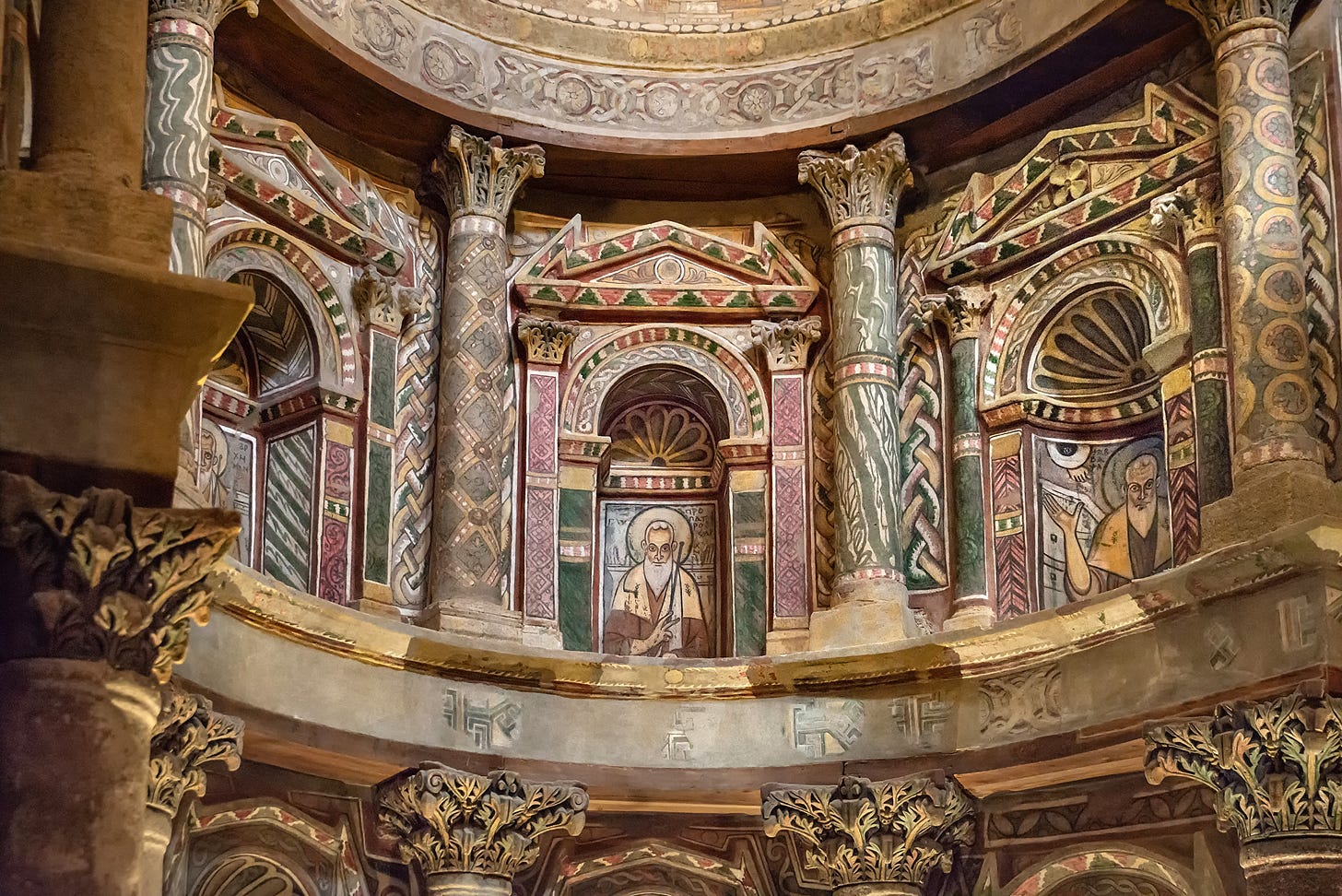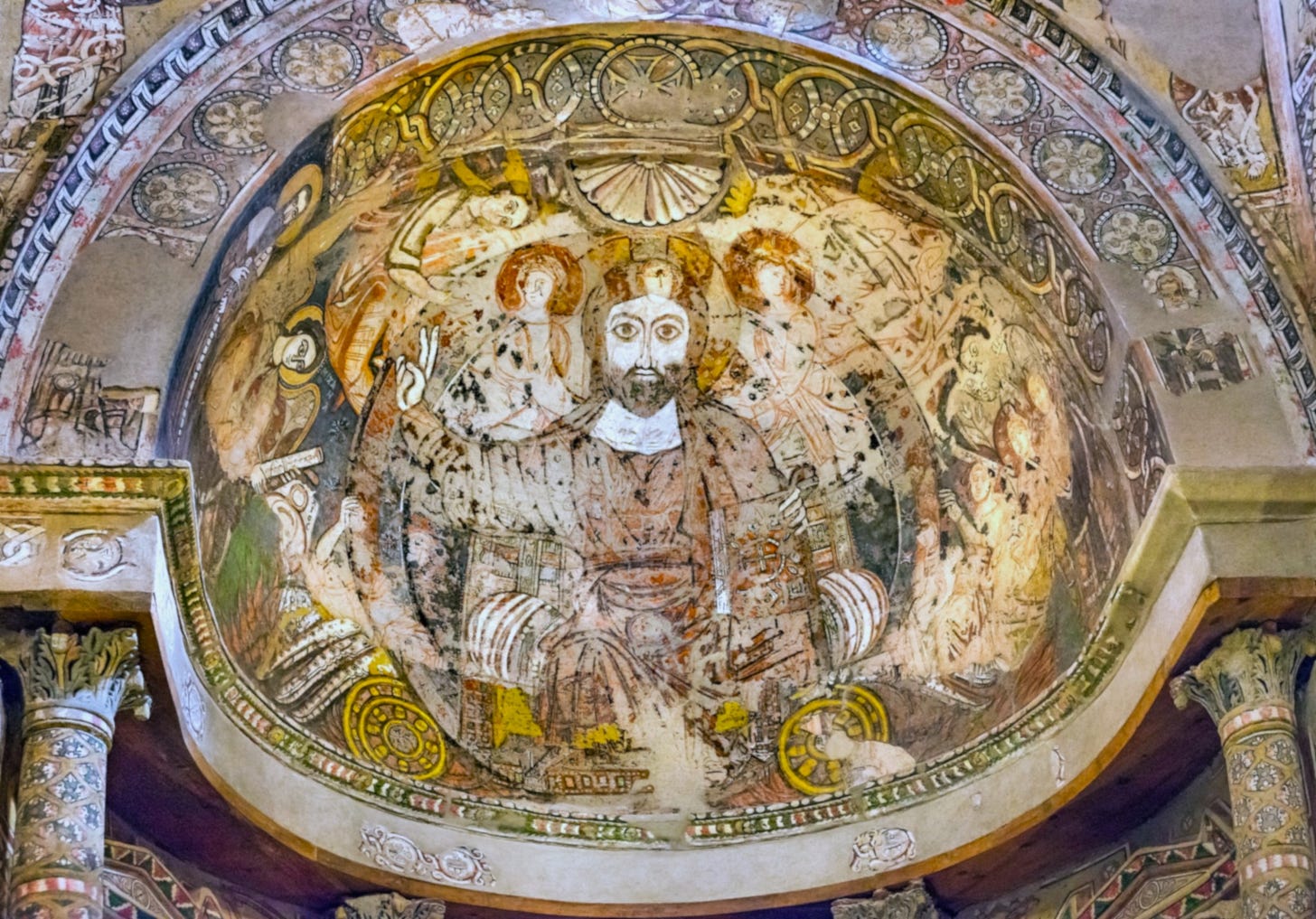The Desert Transfigured: Coptic Monastic Art

The early Coptic art produced in Egyptian monastic centres like Nitria, Kellia and Bawit, and later the Red and White Monasteries, developed within the broader cultural and religious world of the Eastern Roman (Byzantine) Empire, but also with deep roots in one of the most ancient and artistically advanced cultures in human history.

What emerged in these remote desert communities was not a derivative provincial version of Byzantine style, but a distinctive synthesis: bold, simplified forms, expressive eyes, and rich symbolic language. The artistic heritage of Pharaonic Egypt, its monumental, boldly frontal statuary, hieratic compositions and gestures, and sacred visual order, found a continuity in Christian frescoes, wall paintings, stone carvings and wood panels made by monks.
This early phase of Coptic monastic art had an enormous influence on Christian art further afield. Syrian and Palestinian monasteries developed in visual dialogue with Egypt. Monks fleeing persecution would carry their aesthetic with them into the north of the empire, especially into southern Italy, Sicily, and finally as far as Gaul, shaping the foundations of Latin Christian visual culture for centuries to come.
Long before the golden mosaics of Ravenna or the soaring spires of Cluny, a bold and otherworldly Christian art was already flourishing deep in the Egyptian desert. In the monastic cells and sanctuaries of Bawit, Kellia, and the great White and Red Monasteries of Upper Egypt, monks carved and painted a new visual language, hieratic, stylised, and utterly unlike anything that had come before.
I hope that if you enjoyed Friday’s free post on the history of this monastic movement, you’ll subscribe to explore more deeply the extraordinary visual culture it produced. From stark desert hermitages to the opulent sanctuaries of the Red and White Monasteries, early Coptic monastic art invites us into a world where silence, sacrifice, and splendour met in intricately carved stone and brilliant pigments.
At the Sacred Images Project we talk about Christian life, thought, history and culture through the lens of the first 1200 years of sacred art. The publication is supported by subscriptions, so apart from plugging my shop, there is no advertising or pop-ups. It’s my full time job, and while it’s now providing me with a full time income, we are now looking at growing this into a multi-layered, multi-media project, so I can’t yet provide all the things I want to and am planning for.
You can subscribe for free to get one a week.
For $9/month you also get a second, weekly paywalled in-depth article tracing the history and meaning of our great sacred patrimony. For paid subscribers there are also extra posts with in-person explorations, exclusive photos and videos and materials like downloadable exclusive high resolution printable images. In the works are ebooks, mini-courses, videos and eventually podcasts.
I hope you’ll join us to look at and begin to understand some of these incredible treasures.




